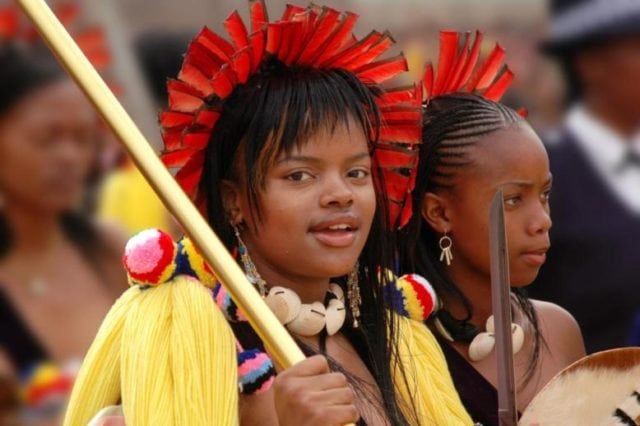All You Must Know About The Swazi Reed Dance
1.The Birth of Swazi Bare Reed Dance Established in the 1940s, the Swazi Reed Dance is a traditional dance and chastity rite performed annually in order to encourage young girls to remain virgins. It is an eight-day event and since the ceremony’s inception, it has been holding till date. 2. Who Are The dancers? Swazi girls (strictly virgins and unmarried women) are the dancers and the tradition begins with the girls rallying together at the royal village of the Queen Mother. They are then tasked with fetching reeds from nearby areas ahead of the ceremony which they bundle back to the Queen Mother. The reeds are usually used to repair windbreak around the Queen mother’s royal home. The girls which also include the King’s numerous daughters are allowed to take a day rest after the task before they get their traditional costumes ready. On the sixth day, they will all head to the main arena where the dance will commence. It will continue on day seven and eight – the main day in which the king would grace the occasion. The girls’ costumes include a sash, a skirt, rattling anklets from cocoons, bead necklace and sometimes a knife used in fetching the reeds from the bush which represents the fact that they have not been sexually active. To look different from other participants, the royal daughters are differentiated by red feathers which are added to their costumes. 3. Who Gets Entertained? It is safe to call the ceremony, “the king’s event”. This is so because, on the main day of the ceremony, the virgin girls dance and chant in the presence of the royal family, visitors, spectators, and other noble people. During the dance, the King can choose a new wife; it is worthy to note here that the king already has14 wives. 4. Everybody Strives To Be The King’s Bride Since the king can choose a wife at the ceremony and, in view of the fact that he’s famous for spoiling his wives with gifts and lavish lifestyle, numerous single Swazi girls and women leave their various communities and converge at Ludzidzini Royal Village so that they can take part in the dance. Meanwhile, the families of some girls who refuse to attend because they are not virgins, have had children outside wedlock or sheer stubbornness are punished; they are forced to bring in cows as fine. They are also deprived of some benefits in the village. This practice doesn’t sit well with critics who have been slamming the king, proclaiming the tradition uncivil. 5. Why They Go Bare? Well, there is no known reason why the reed dancers choose to go almost bare but the official purpose of the yearly ceremony is to protect the women’s virginity, encourage unity and singleness of purpose among the women who work together to impress the Queen. However, some human rights activists have claimed that the whole idea behind making the girls appear semi-nude is so the King can choose a wife. Read Also: Facts About Akan People, Language, Religion, and Culture
Why YouTube Authorized The Display
Swazi Reed Dance has essentially gained some acceptance and has also built a credible space on Youtube. In other words, there are no more restrictions to Swaziland’s famous reed dance which features bare-breasted women. The former restriction on the dance failed to augur-well with some culture oriented activist groups. It all started when TV Yabantu which showcases and propagates the African heritage to the whole world through its YouTube channel, showed the famous Swazi Reed Dance and its content was flagged as inappropriate. Youtube also placed a label on the channel which was launched in 2016, advising advertisers that its content was “not suitable” for most advertisers. In a bid to clear the misconceptions, the head of Yabantu TV, Lazi Damini contacted Google emphasizing that the channel was simply reflecting the cultural values of his community. Unfortunately, Google insisted that the content violated the platform’s standards. This then raised concerns among the management of Yabantu TV who then decided to take serious action against the treatment its contents were receiving. Lazi Dlamini settled for launching a campaign that would persuade the tech giants to rescind their decision. He organized a series of protests, working with more than 200 cultural groupings from Swaziland. The protest involved women who posed bare-breasted with placards that read: “Google are racist” and “my breasts are not inappropriate”. Some of the women who interacted with the media bemoaned the manner in which their cultural heritage was labeled as inappropriate or regarded as porn. They emphasized that posing in a sexually suggestive manner is quite different from posting pictures with a traditional theme. Eventually, the protests were put to rest. This was after YouTube decided to lift the restrictions on the grounds that nudity is allowed on the platform when it is not culturally important or contextualized.



